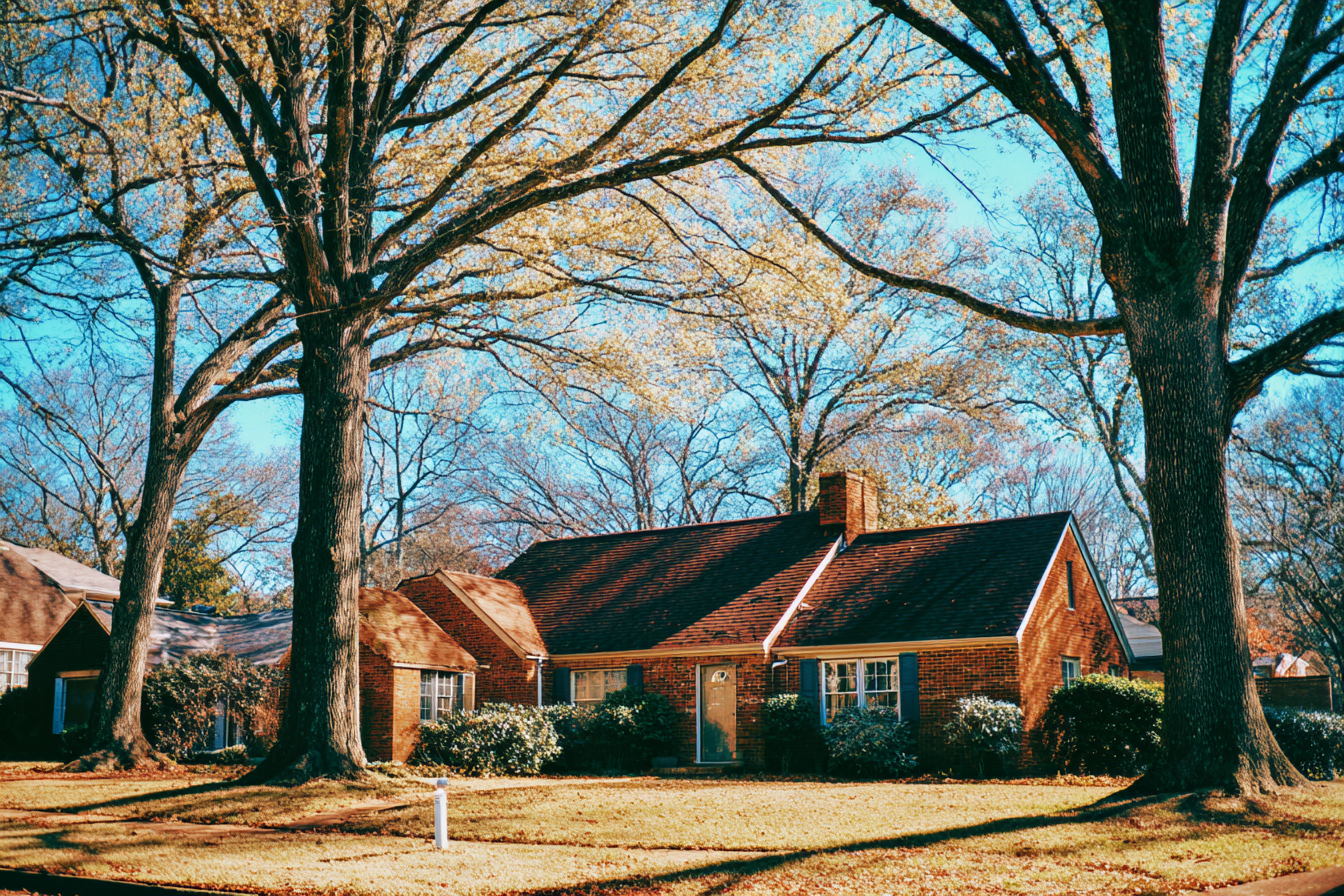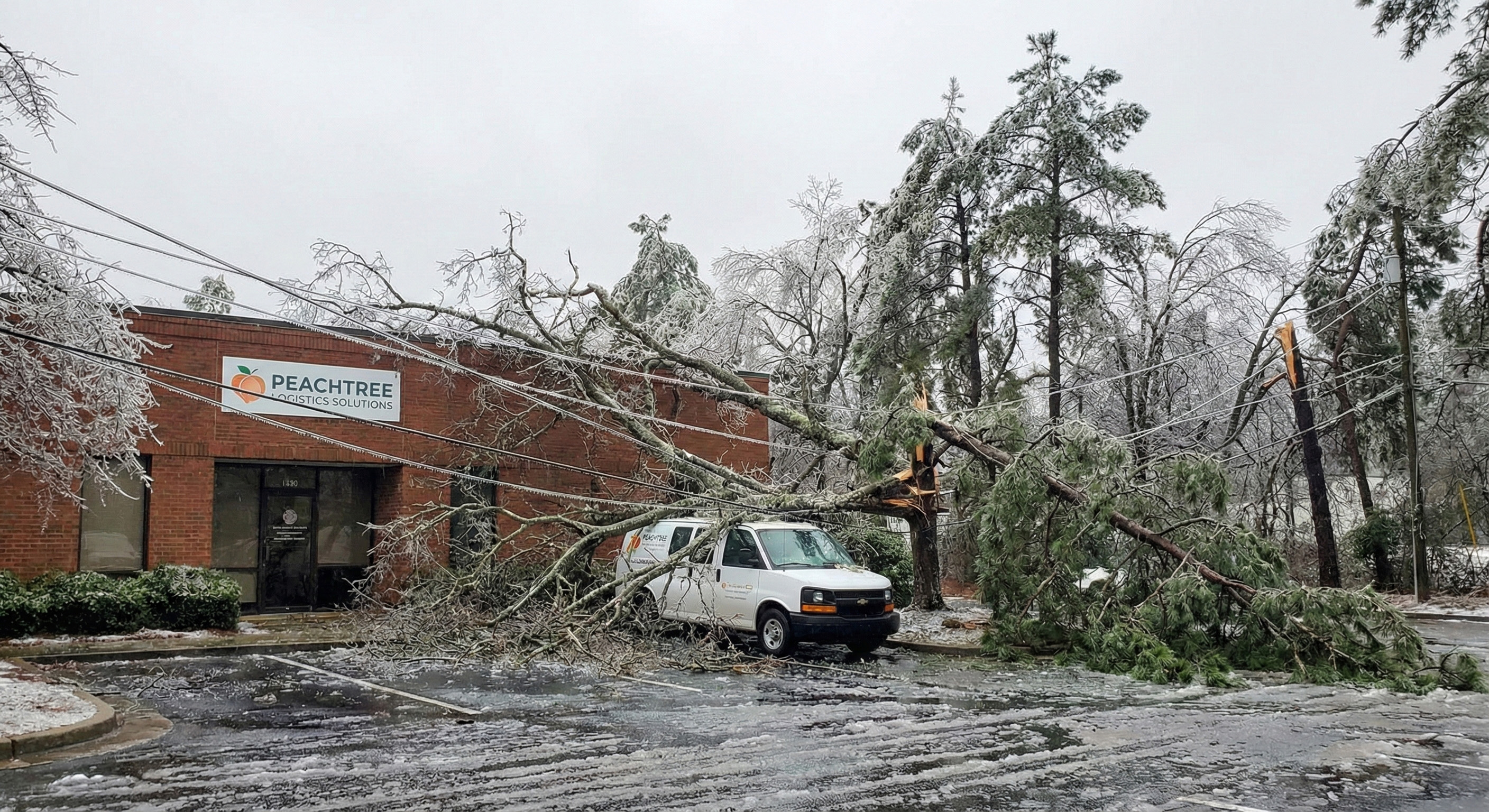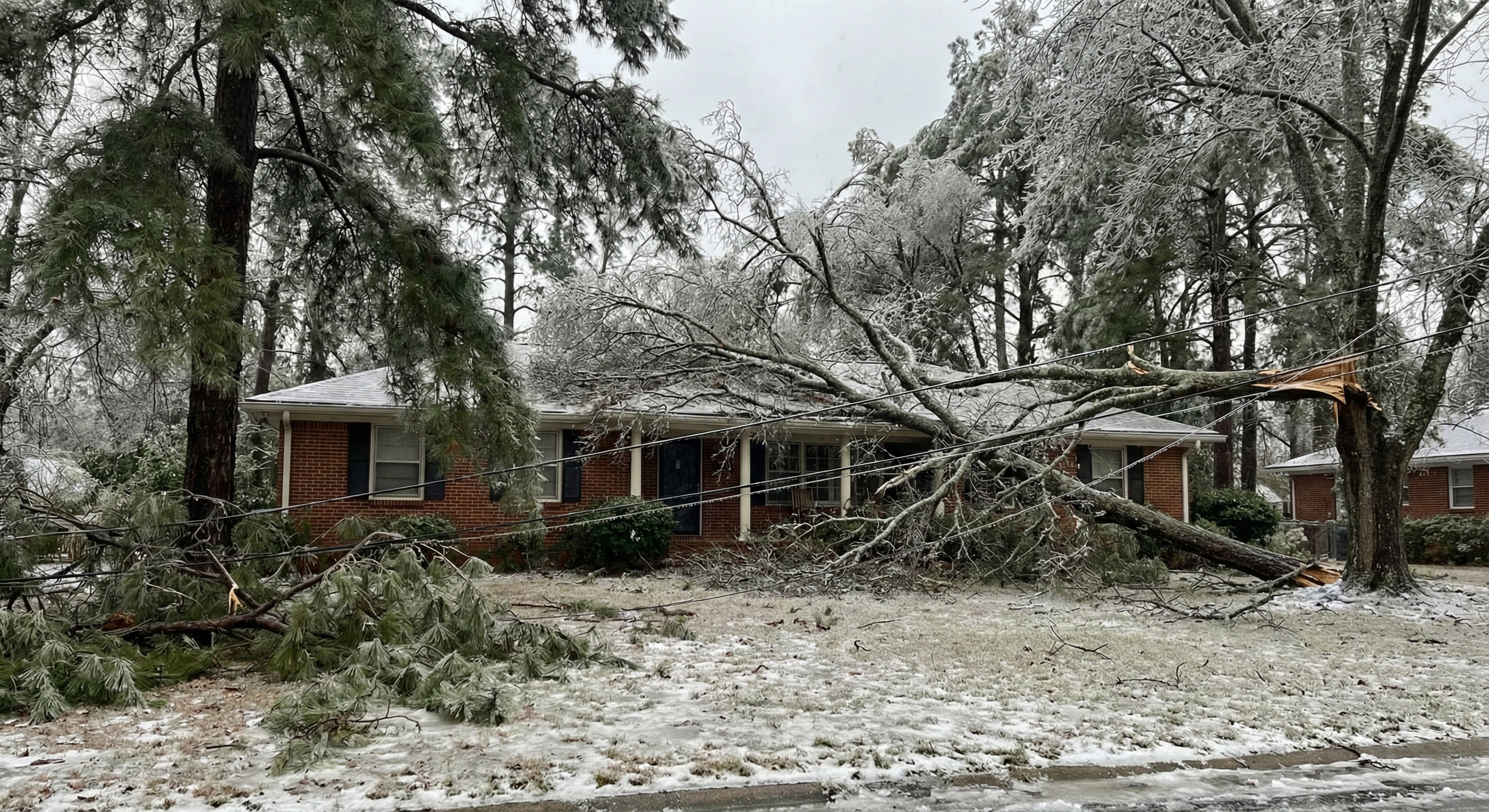
As a homeowner in Georgia, you know that our state's beauty is defined by its lush, green landscapes and majestic trees. From the classic Southern Live Oaks to the vibrant Crape Myrtles, our trees are not just part of the scenery, they're a valuable asset to our properties. But to keep them healthy, safe, and looking their best, you can't just grab a saw and start cutting whenever you feel like it. The secret to a thriving landscape lies in understanding the art and science of seasonal tree pruning.
In a state with four distinct seasons, timing is everything. Pruning a tree at the wrong time can do more harm than good, opening it up to disease, insect infestation, or even killing it outright. This comprehensive guide will walk you through the optimal times to prune your trees in Georgia, explaining the "why" behind each season's recommendations. You’ll learn about the unique needs of different tree species, identify common mistakes to avoid, and discover how professional help can make all the difference. Get ready to transform your yard into the vibrant, healthy oasis you've always envisioned.
The Golden Rule: Dormant Season Pruning (Late Fall & Winter)
For most trees in Georgia, the period from late fall to early winter is the absolute best time for major pruning. This is known as the dormant season, a critical phase in a tree's life cycle. When the leaves have fallen and the temperatures drop, the tree's metabolism slows down, and it enters a state of rest.
This is the perfect window for several reasons:
- A Clear View: With no leaves on deciduous trees, you can clearly see the tree's entire structure. This makes it easier to spot and remove crossing branches, weak limbs, and structural defects that might be hidden during the warmer months. You can precisely shape the tree to promote healthy growth and a strong form.
- Minimized Stress: Pruning during dormancy causes the least amount of stress to the tree. Since the tree is not actively growing or producing sap, it conserves its energy. The pruning cuts will begin to heal in the early spring, just as the tree prepares to burst with new growth.
- Reduced Risk of Disease and Pests: Many tree diseases, like Oak Wilt, are spread by insects that are most active during the spring and summer. Pruning during the colder, dormant months significantly reduces the risk of these pathogens and pests entering the fresh wounds.
So, what should you focus on during this season? This is the ideal time for:
- Structural Pruning: Removing branches to create a single, dominant leader and strong scaffolding for the tree.
- Crown Thinning: Selectively removing branches to improve air circulation and sunlight penetration.
- Removing Deadwood: Clearing out any dead, diseased, or broken branches.

The Spring Awakening: Pruning for Specifics
While the dormant season is king for most major pruning, spring is a key time for certain species and specific tasks. As the warmth returns, many trees come alive with new buds and blossoms.
- Late-Winter/Early-Spring Bloomers: Trees like Dogwoods and Magnolias that flower on old wood should be pruned immediately after they finish blooming. Pruning them too early in the year will remove the very buds that create those stunning spring flowers. By waiting until after the bloom, you ensure you don't sacrifice next year's floral display.
- Crape Myrtles: In Georgia, Crape Myrtles are a summer staple. The best time to prune them is in late winter or early spring before new growth begins. The goal is to encourage a strong structure and robust summer flowering. Proper pruning of Crape Myrtles involves removing suckers from the base, shoots growing into the canopy's center, and any crossing or rubbing branches. Avoid the common mistake of "Crape Murder," where the tree is topped or severely cut back, as this can weaken the tree and lead to unsightly growth.
A Cautious Approach to Summer Pruning
Summer is a period of active growth for trees, and it’s generally not the time for heavy pruning. Aggressive cuts during the heat of a Georgia summer can cause significant stress, leading to water loss and increased vulnerability. However, summer pruning does have its place.
- Removing Dead or Damaged Limbs: It is always acceptable, and often necessary, to remove dead, diseased, or storm-damaged branches at any time of year. These branches pose a safety risk and can invite pests or decay.
- Light Shaping and Thinning: For some trees, like evergreens, a light trim in early summer can help maintain their shape. This type of "cosmetic" pruning is meant to refine the tree's form without making significant structural changes.
- Fruit Trees: Pruning fruit trees in the summer can help manage their size, direct energy toward fruit production, and improve air circulation. This type of pruning is highly specialized and depends on the specific species of fruit tree.
It is crucial to be aware of the risks during this season. For instance, pruning oak trees in summer is highly discouraged due to the risk of spreading Oak Wilt disease, which is carried by beetles that are most active in warmer weather.
The Fall Fumble: Why You Should Avoid Pruning
While it may seem like a good idea to tidy up your landscape in the fall, it is generally the worst time to perform significant pruning in Georgia.
- Stimulating New Growth: Pruning in the fall can encourage new, tender growth that won't have time to harden off before the first frost. This new growth is extremely susceptible to cold damage and can weaken the entire tree.
- Slowed Healing: As a tree prepares for dormancy, its ability to heal slows down. Pruning cuts made in the fall will remain open wounds for an extended period, making the tree vulnerable to pests, diseases, and decay.
The only exception to this rule is the immediate removal of broken or hazardous branches, which must be addressed for safety reasons. For all other pruning, put the shears away and wait for the dormant season.
The Tree's Unique Pruning Schedule
Beyond the general seasonal guidelines, it's important to remember that every tree is unique. What works for a Crape Myrtle might not work for a Live Oak.
- Oaks & Elms: These magnificent shade trees are highly susceptible to diseases like Oak Wilt and Dutch Elm Disease. It is critical to prune them only during the dormant winter months to prevent the spread of these devastating conditions.
- Evergreens: Species like Southern Magnolias and various pines require minimal pruning. When they do need it, light thinning or shaping can be done in the dormant season to maintain their structure.
- Fruit Trees: Peaches, apples, and other fruit trees have specific pruning needs to maximize fruit production. This often involves a mix of dormant and summer pruning, depending on the tree's age and type.
Knowing these specific requirements is key to maintaining a healthy and beautiful landscape.
Common Pruning Mistakes to Avoid
The wrong cut can have long-lasting, negative consequences for a tree. Avoid these common mistakes:
- Topping: This is the indiscriminate cutting of large, upper branches to reduce a tree’s height. Topping is a harmful practice that creates weak, unhealthy growth and makes the tree susceptible to rot, disease, and structural failure.
- Leaving Stubs: Making a cut too far from the branch collar (the swollen area at the base of the branch) leaves a "stub" that cannot heal properly. This creates an entry point for pests and disease.
- Flush Cuts: Cutting a branch too close to the trunk or main branch can damage the branch collar, which is where the tree’s natural healing process occurs. This hinders the tree's ability to compartmentalize and seal the wound.
- Using Dull Tools: Dull tools can tear and damage a tree's bark, creating a jagged wound that is difficult for the tree to heal. Always use sharp, sterilized tools to make clean, precise cuts.

The Professional Advantage: When to Call an Arborist
While a homeowner can handle simple, light pruning, there are many situations where calling a professional arborist is not just a good idea, but a necessity.
- Large, Mature Trees: Pruning large trees is dangerous and requires specialized equipment and training. Professionals are experts in safe climbing techniques and have the tools to handle heavy limbs.
- Complex Structural Issues: If a tree has crossing branches, co-dominant stems, or a weakened structure, a certified arborist can create a pruning plan to correct these issues and improve the tree's long-term health.
- Disease Diagnosis and Treatment: If you suspect your tree is suffering from a disease or pest infestation, a professional can accurately diagnose the problem and recommend the best course of action.
- Proximity to Hazards: Trees near power lines, your home, or other structures should always be handled by a professional. This ensures the safety of your property and the people around it.
Conclusion
Caring for the trees on your Georgia property is a rewarding experience, but it requires knowledge and a respect for nature's rhythms. Understanding the importance of seasonal pruning, from the critical dormant season to the specific needs of different species—is the first step toward a healthier, safer, and more beautiful landscape. Remember that every cut you make is an investment in your tree's future.
While this guide provides the essential knowledge, there's no substitute for the eye of a trained expert. For all your tree care needs, from routine maintenance to complex removals and disease management, the team at Georgia Pro Tree Services is here to help. Our certified arborists have the local expertise and professional equipment to ensure your trees flourish year-round. Don't take chances with your most valuable natural assets.
Contact Georgia Pro Tree Services today for a professional consultation and discover how we can help your trees thrive!
FAQs about Tree Pruning
Q1: What is the single best time of year to prune most trees in Georgia?
The single best time to perform major pruning on most deciduous trees in Georgia is during the dormant season, which typically runs from late fall through late winter (roughly December to March). During this period, the trees have lost their leaves, making it easier to see their structure. The lack of active growth means the tree is under less stress, and the risk of pest and disease infestation through fresh cuts is at its lowest.
Q2: Can I prune my trees in the summer in Georgia?
You should generally avoid heavy pruning during the hot Georgia summer. However, it is always acceptable to remove dead, diseased, or storm-damaged branches for safety reasons. Light shaping and thinning can also be done on some species in early summer. It is critical to avoid pruning certain trees like oaks during the summer to prevent the spread of diseases like Oak Wilt.
Q3: What is "Crape Murder" and why should I avoid it?
"Crape Murder" is the common term for the aggressive and harmful practice of topping or severely cutting back Crape Myrtles. This practice, often done with the mistaken belief it encourages better blooms, actually weakens the tree, creates an unnatural and unsightly shape, and promotes the growth of weak, spindly shoots that are prone to breaking. Proper Crape Myrtle pruning involves selective thinning to create a strong, beautiful structure.
Q4: How do I know if I need to hire a professional arborist?
You should always hire a professional arborist for pruning and tree care if the tree is large, difficult to access, or near a power line or structure. Professionals have the necessary training, insurance, and equipment to perform the work safely. Additionally, if you suspect your tree has a disease, a professional can provide an accurate diagnosis and treatment plan. A pro can also help with structural pruning on young trees to set them up for a lifetime of healthy growth.
Q5: What are the risks of pruning at the wrong time of year?
Pruning at the wrong time of year can significantly harm a tree. For example, fall pruning can stimulate new growth that is easily damaged by frost. Pruning in the spring or summer can stress the tree, causing a heavy loss of sap and making it vulnerable to disease and pests that are active in warmer weather. In the case of specific trees like oaks, pruning in the wrong season can lead to the spread of fatal diseases.

We're your local tree pros!
Georgia Pro Tree Services takes the highest quality of care when servicing your trees. Call us to find out how we can help you keep your yard in top shape.



